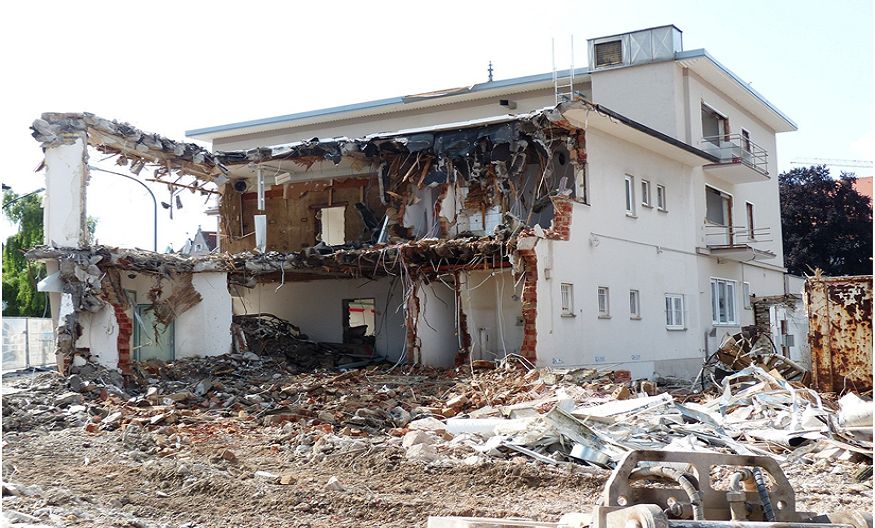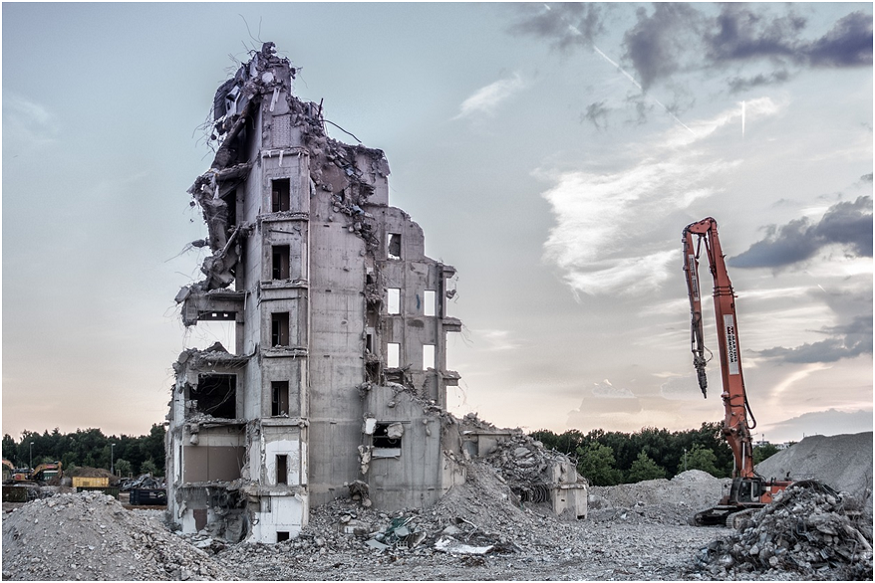
When the structure is demolished, the waste isn’t just “gone.” It is processed through a deliberate chain of sorting, hauling, and processing that is designed to keep waste materials from entering a landfill. Click here for further reading on how landfills work.
This guide explains the process so eco-friendly citizens can be knowledgeable about what happens with debris materials after demolition and why it matters.
Where Does Demolition Debris Go?
After all of the materials have been discarded, the crew will implement a plan that begins at the site. A licensed demolition contractor will typically keep the materials separated at the site (concrete here, metals there, etc.) so the recyclers can pick up cleaner loads. The roll-off dumpster rentals are marketing and exchanged as needs in the project materialize, keeping the condition of the site safe and organized.
After the site stage is clean, trucks will deliver a load to a transfer station, material recovery center, or directly to a recycler. If the load is “mixed” construction and demolition (C&D) waste, it will go to a sorting line, where workers and machinery will pull out metal, wood, and cardboard before the rest goes to the permitted landfill. If the load is clean and is only concrete for example, it usually goes without going to the sorting line to a recycler. This reduces costs and increases diversion towards recycling. Each truck provides a weigh ticket for every trip allowing owners and cities to know what percentage was recycled vs. disposed.
Common Materials That Get Recycled
A lot of what looks like “trash” is actually feedstock for new products. When crews can separate materials earlier in the process, recyclers can recover more material and sell it back into the marketplace. A material recovery facility (MRF) receives many loads of material that can be sorted, often by magnets, screens, and workers, to separate out valuable components for reuse. Potential customers looking for debris removal service Spokane, often want to see where a local contractor is taking loads nearby.
The most common recyclables will include:
- Concrete and asphalt – Crushed, processed to make aggregate for road base or new concrete mixes.
- Steel and metals – Separated with a magnet, melted back into raw product for appliances, vehicles and building components.
- Dimension lumber and clean wood – Processed into mulch or used as compost additive or engineered wood products.
- Brick and masonry – Used again as landscape stone or crushed for fill.
- Cardboard and plastics (site packaging) – Baled and sent to paper and plastics mills.
- Gypsum drywall (clean) – Reprocessed into new wallboard or used as a soil amendment where allowed.
Hazardous Waste Handling Explained

Not everything can be thrown in the dumpster. Old buildings may have asbestos, lead-based paint, PCBs in certain electrical equipment, or refrigerants in HVAC equipment. These materials must be handled by trained crews, in negative pressure containment, and must be placed into sealed containers that are clearly marked with labels and manifests. Abatement is done before demolition, and only licensed haulers can take the waste to specialized facilities.
In many areas, fluorescent lamps, batteries, mercury thermostats, and e-waste are considered “universal waste.” These are boxed and labeled and shipped to processors who can safely recover the metals and glass from these materials. This is not the same as junk hauling; this is a regulated workflow that protects workers, neighbors, and the environment. Properly handling hazardous waste will keep toxins out of the soil and waterways and keeps the rest of the load recyclable.
Local Rules on Debris Disposal
City and county rules affect the route each load takes, with some jurisdictions requiring minimum recycling rates on commercial projects or issuing fee discounts for loads that are clean from defined single material. Other jurisdictions can have clear prohibitions: No yard debris. No tires! No untreated hazardous waste! It is also worth noting that documentation is useful as owners want to receive green building points for things like recycling in construction projects: LEED, etc.
Before the project starts, it should be useful to know the local guidelines:
- Permits and notification:Many cities will require a demolition permit and possibly a recycling or waste management plan, or both, which stipulates types and tonnages of loads and their end destinations.
- Source separating:Marginal rules are in place which lets the debris generators separate containers for concrete, metals, and wood to help achieve higher recovery rates.
- Landfill bans / special streams:There may be a small stream for clean gypsum, untreated wood, or paved roofing that can be diverted from the landfill.
- Roll-off container limitations:There will be restrictions on weight and the method of loading which are set so that loads are not transported and not safely/unloaded preventing contamination.
- Proof of diversion:Documentation via weight tickets and receipts from the recyclers to document recycling performance and proof thereof.
The Future of Sustainable Demolition
Demolition is not just getting greener; it is getting smarter. Selective “deconstruction” is on the rise, where crews take buildings apart piece by piece (for instance, they remove all the doors, windows, fixtures, high-value lumber, etc.). Digital marketplaces have started to connect the reclaimed materials to architects and DIY buyers, extending the life of each product while reducing the demand for new resources.
On the backend at processing facilities, robotic sorters and artificial intelligence vision systems are continuing to improve recovery of wood, plastics and aggregates out of C&D (https://www.epa.gov/smm/sustainable-management-construction-and-demolition-materials) mixed streams. And in the case of concrete recyclers, they are trialing low carbon concrete mixes that have the potential to lock-in even further recycled content, without compromising strength. Some manufacturers will begin offering take-back programs on items like carpet, ceiling tiles or insulation to help close the loop on building materials. Given the timing of these innovations, communities can look forward to more lighter truckloads headed to landfills, project budgets diminished by not having to pay tipping fees and a more robust local circular economy.
In summary, what happens after demolition is not random. Given a plan, equipment, and rules of the game, it can be reasonably expected that much of the load can be recycled or reused. This is why hiring a crew with experience, along with the tools of roll-off dumpsters, and verified recycling partners, pays-off for residents, contractors, and our planet.
